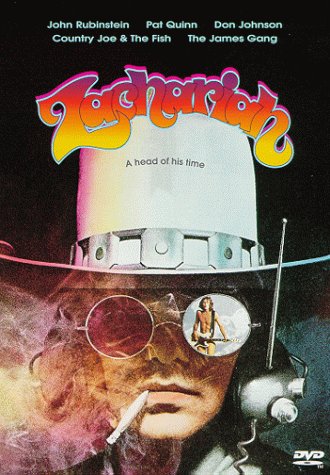Introduction:
Released in 1971, “Zachariah” is a cinematic anomaly, a psychedelic Western that melds the traditional elements of the genre with the countercultural ethos of the 1960s and early 1970s. Directed by George Englund and inspired by Herman Hesse’s novel Siddhartha, the film unfolds as a musical journey through the American West, blurring the lines between reality and fantasy. This comprehensive review delves into the narrative, the film’s cultural and historical context, its visual aesthetics, musical components, and its reception within the cinematic landscape of its time.
Section 1: The Counterculture Movement
1.1 Historical Context: To fully grasp the essence of “Zachariah,” it is crucial to understand the socio-political backdrop of the late 1960s and early 1970s. The counterculture movement, with its emphasis on nonconformity, experimentation, and rejection of mainstream values, greatly influenced artistic expressions, including cinema.
1.2 Influence of Siddhartha: Explore the influence of Herman Hesse’s novel Siddhartha on the film’s narrative. As an exploration of self-discovery and individualism, “Zachariah” draws parallels with the philosophical themes embedded in Hesse’s work, adding depth to its countercultural narrative.
Section 2: Narrative and Countercultural Themes
2.1 Coming-of-Age and Rebellion: The narrative follows the titular character, played by John Rubinstein, on a journey of self-discovery and rebellion against societal norms. Analyze the coming-of-age elements as Zachariah navigates the American West, encountering eccentric characters and questioning established conventions.
2.2 Breakdown of Genre Conventions: “Zachariah” subverts traditional Western genre conventions, injecting an anarchic spirit and psychedelic sensibility. Through its dreamlike sequences, surreal encounters, and a non-linear narrative structure, the film challenges the expectations of both Western enthusiasts and counterculture followers.
Section 3: Cinematography and Visual Aesthetics
3.1 Psychedelic Imagery: Delve into the film’s visual aesthetics, characterized by psychedelic imagery that mirrors the era’s embrace of mind-altering experiences. The use of vibrant colors, distorted perspectives, and kaleidoscopic visuals contributes to the film’s hallucinatory atmosphere.
3.2 Symbolism and Allegory: Unpack the symbolism and allegorical elements present in the film’s visual language. From Zachariah’s symbolic journey to the surreal landscapes he traverses, the cinematography serves as a canvas for countercultural expression and artistic experimentation.
Section 4: The Musical Component
4.1 Rock ‘n’ Roll Soundtrack: An integral aspect of “Zachariah” is its rock ‘n’ roll soundtrack, featuring contributions from iconic musicians of the time. Explore the impact of the music on the film’s atmosphere, drawing parallels with the counterculture’s embrace of music as a form of rebellion and expression.
4.2 Musical Performances: Examine the in-film musical performances by artists like Country Joe and the Fish, The James Gang, and Doug Kershaw. These performances not only contribute to the film’s narrative but also serve as a reflection of the burgeoning music scene that echoed the countercultural ethos.
Section 5: Reception and Cultural Impact
5.1 Contemporary Reception: Assess how “Zachariah” was received by audiences and critics upon its release in 1971. Analyze the film’s reception in the context of the counterculture movement, considering how its unconventional narrative and experimental approach were perceived during a period of cinematic evolution.
5.2 Legacy and Cult Status: Reflect on the legacy of “Zachariah” and its subsequent cult status. Explore how the film’s unique blend of Western, counterculture, and musical elements has endured over the years, attracting new generations of viewers intrigued by its unconventional charm.
Section 6: Influence on Countercultural Cinema
6.1 Paving the Way for Experimental Cinema: Consider how “Zachariah” contributed to the evolution of experimental and countercultural cinema. Explore its influence on filmmakers who sought to break away from traditional narrative structures and embrace the freedom of expression offered by the counterculture movement.
6.2 Echoes in Contemporary Filmmaking: Examine whether the spirit of “Zachariah” can be identified in contemporary filmmaking. Analyze how its experimental elements, rejection of genre norms, and celebration of individualism have left an indelible mark on subsequent generations of filmmakers seeking to push creative boundaries.
Conclusion:
In conclusion, “Zachariah” stands as a testament to the creative experimentation that characterized the counterculture movement of the late 1960s and early 1970s. Its fusion of Western aesthetics, countercultural themes, and a rock ‘n’ roll soundtrack create a cinematic experience that transcends traditional genre boundaries. As a unique entry in the canon of countercultural cinema, “Zachariah” continues to captivate audiences with its psychedelic visuals, rebellious spirit, and celebration of individualism, offering a timeless journey through the American West that resonates with the free-spirited ethos of its era.
